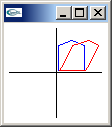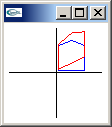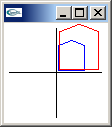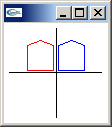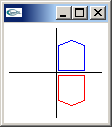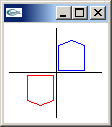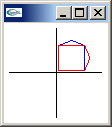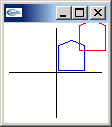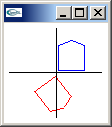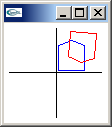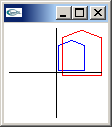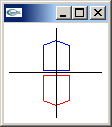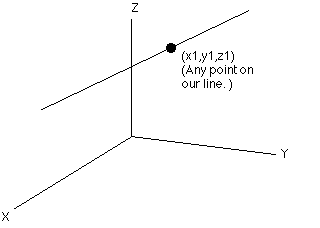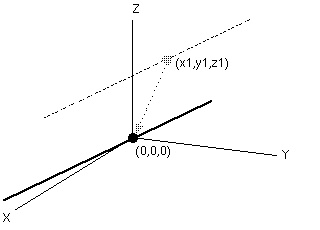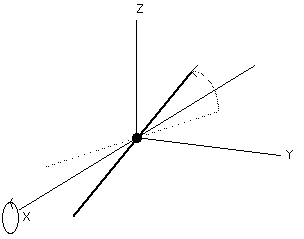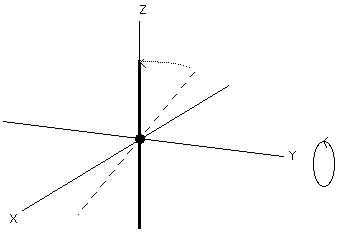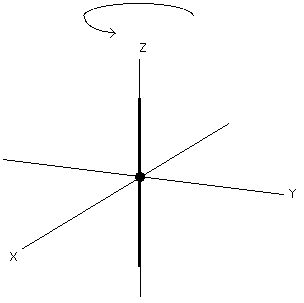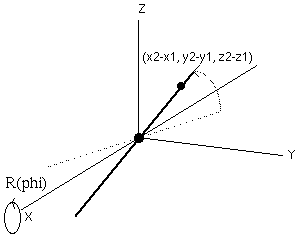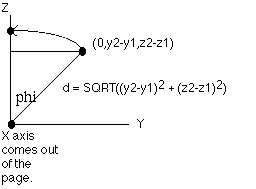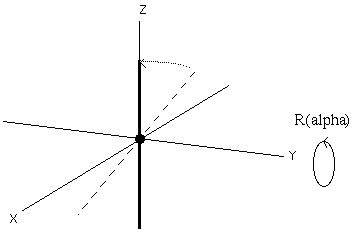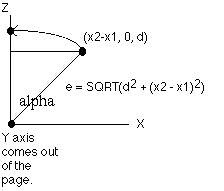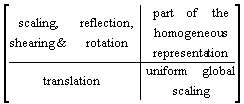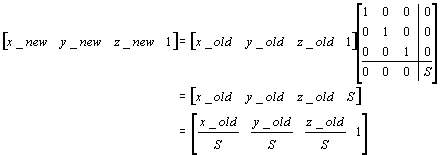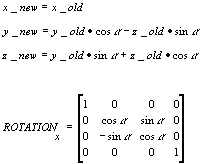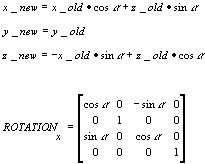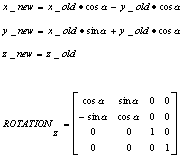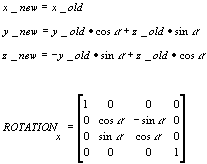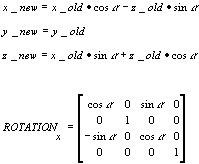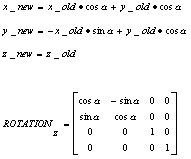invert matrix
-1.0, 0.0, 0.0, 0.0,
0.0, -1.0, 0.0, 0.0,
0.0, 0.0, -1.0, 0.0,
0.0, 0.0, 0.0, -1.0 |
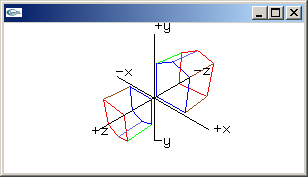 |
shear x matrix
1.0, Shxy, Shxz, 0.0,
0.0, 1.0, 0.0, 0.0,
0.0, 0.0, 1.0, 0.0,
0.0, 0.0, 0.0, 1.0 |
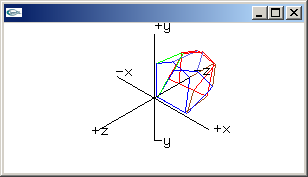 |
shear y matrix
1.0, 0.0, 0.0, 0.0,
Shyx, 1.0, Shyz, 0.0,
0.0, 0.0, 1.0, 0.0,
0.0, 0.0, 0.0, 1.0 |
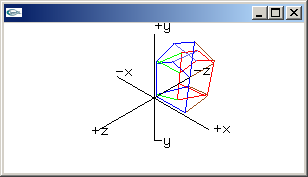 |
shear z matrix
1.0, 0.0, 0.0, 0.0,
0.0, 1.0, 0.0, 0.0,
Shzx, Shzy, 1.0, 0.0,
0.0, 0.0, 0.0, 1.0 |
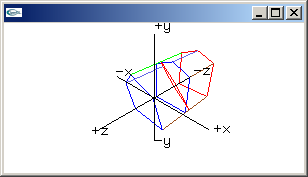 |
shear xy matrix
1.0, 0.0, Shxz, 0.0,
0.0, 1.0, Shyz, 0.0,
0.0, 0.0, 1.0, 0.0,
0.0, 0.0, 0.0, 1.0 |
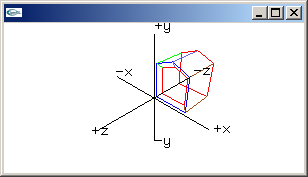 |
shear xz matrix
1.0, Shxy, 0.0, 0.0,
0.0, 1.0, 0.0, 0.0,
0.0, Shzy, 1.0, 0.0,
0.0, 0.0, 0.0, 1.0 |
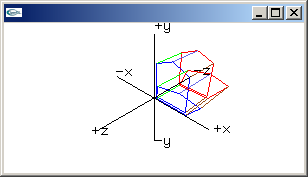 |
shear yz matrix
1.0, 0.0, 0.0, 0.0,
Shyx, 1.0, 0.0, 0.0,
Shzx, 0.0, 1.0, 0.0,
0.0, 0.0, 0.0, 1.0 |
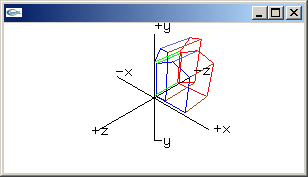 |
shear xyz matrix
1.0, Shxy, Shxz, 0.0,
Shyx, 1.0, Shyz, 0.0,
Shzx, Shzy, 1.0, 0.0,
0.0, 0.0, 0.0, 1.0 |
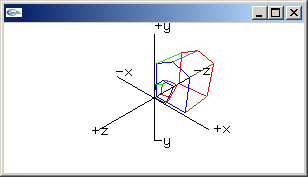 |
scaling matrix
Sx, 0.0, 0.0, 0.0,
0.0, Sy, 0.0, 0.0,
0.0, 0.0, Sz, 0.0,
0.0, 0.0, 0.0, 1.0 |
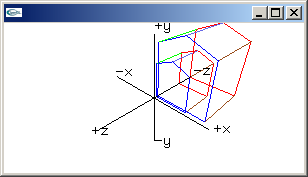 |
translation matrix
1.0, 0.0, 0.0, Tx,
0.0, 1.0, 0.0, Ty,
0.0, 0.0, 1.0, Tz,
0.0, 0.0, 0.0, 1.0 |
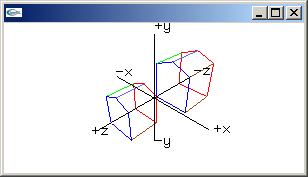 |
rotation x-axis matrix
1.0, 0.0, 0.0, 0.0,
0.0, cos(radians), -sin(radians), 0.0,
0.0, sin(radians), cos(radians), 0.0,
0.0, 0.0, 0.0, 1.0 |
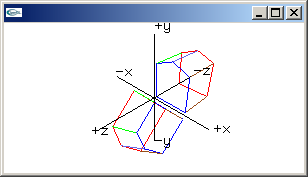 |
rotation y-axis matrix
cos(radians), 0.0, sin(radians), 0.0,
0.0, 1.0, 0.0, 0.0,
-sin(radians), 0.0, cos(radians), 0.0,
0.0, 0.0, 0.0, 1.0 |
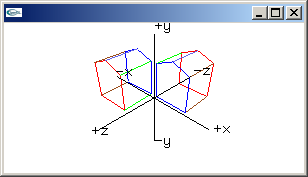 |
rotation z-axis matrix
cos(radians), -sin(radians), 0.0, 0.0,
sin(radians), cos(radians), 0.0, 0.0,
0.0, 0.0, 1.0, 0.0,
0.0, 0.0, 0.0, 1.0 |
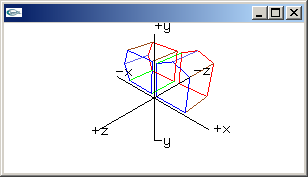 |
Rotate [ x y z ] about the unit vector [ x y z ]T by radians
s = sin(radians);
c = cos(radians);
c_1 = 1 - c; x*x*c_1+c, x*y*c_1-z*s, x*z*c_1+y*s, 0.0,
x*y*c_1+z*s, y*y*c_1+c, y*z*c_1-x*s, 0.0,
x*z*c_1-y*s, y*z*c_1+x*s, z*z*c_1+c, 0.0,
0.0, 0.0, 0.0, 1.0
|
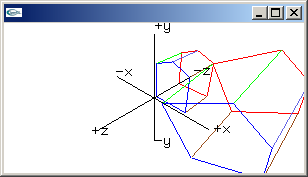 |
Reflection through y-z plane: x -> -x, y -> y, z -> z -1.0, 0.0, 0.0, 0.0,
0.0, 1.0, 0.0, 0.0,
0.0, 0.0, 1.0, 0.0,
0.0, 0.0, 0.0, 1.0 |
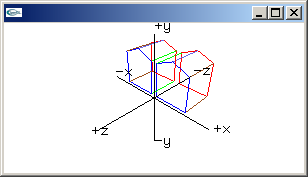 |
Reflection through x-z plane: x -> x, y -> -y, z -> z 1.0, 0.0, 0.0, 0.0,
0.0, -1.0, 0.0, 0.0,
0.0, 0.0, 1.0, 0.0,
0.0, 0.0, 0.0, 1.0 |
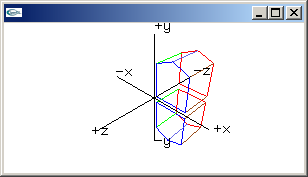 |
Reflection through x-y plane: x -> x, y -> y, z -> -z (Convert RH coordinates to LH coordinates) 1.0, 0.0, 0.0, 0.0,
0.0, 1.0, 0.0, 0.0,
0.0, 0.0, -1.0, 0.0,
0.0, 0.0, 0.0, 1.0 |
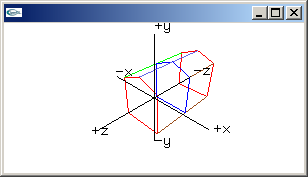 |
inverse scaling matrix
1/Sx, 0.0, 0.0, 0.0,
0.0, 1/Sy, 0.0, 0.0,
0.0, 0.0, 1/Sz, 0.0,
0.0, 0.0, 0.0, 1.0 |
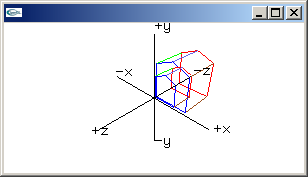 |
inverse translation matrix
1.0, 0.0, 0.0, -Tx,
0.0, 1.0, 0.0, -Ty,
0.0, 0.0, 1.0, -Tz,
0.0, 0.0, 0.0, 1.0 |
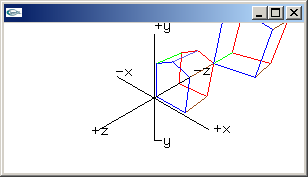 |
inverse rotation x-axis matrix
1.0, 0.0, 0.0, 0.0,
0.0, cos(radians), sin(radians), 0.0,
0.0, -sin(radians), cos(radians), 0.0,
0.0, 0.0, 0.0, 1.0 |
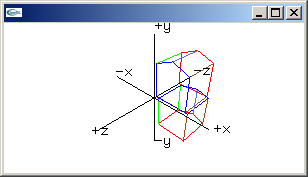 |
inverse rotation y-axis matrix
cos(radians), 0.0, -sin(radians), 0.0,
0.0, 1.0, 0.0, 0.0,
sin(radians), 0.0, cos(radians), 0.0,
0.0, 0.0, 0.0, 1.0 |
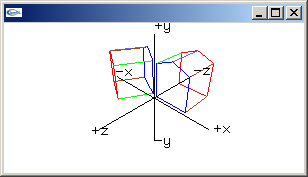 |
rotation z-axis matrix
cos(radians), sin(radians), 0.0, 0.0,
-sin(radians), cos(radians), 0.0, 0.0,
0.0, 0.0, 1.0, 0.0,
0.0, 0.0, 0.0, 1.0 |
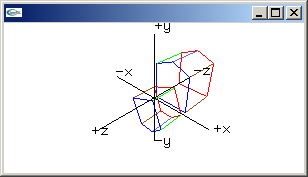 |
Scaling about a fixed point (XF, YF, ZF) can be carried out by 1. translating fixed point back to the origin.
2. scaling with the scaling matrix.
3. translating fixed point back to original position. The overall matrix to achieve this is : Sx, 0.0, 0.0, 0.0,
0.0, Sy, 0.0, 0.0,
0.0, 0.0, Sz, 0.0,
(1-Sx)*XF, (1-Sy)*YF, (1-Sz)*ZF 1.0 |
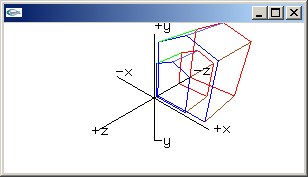 |
